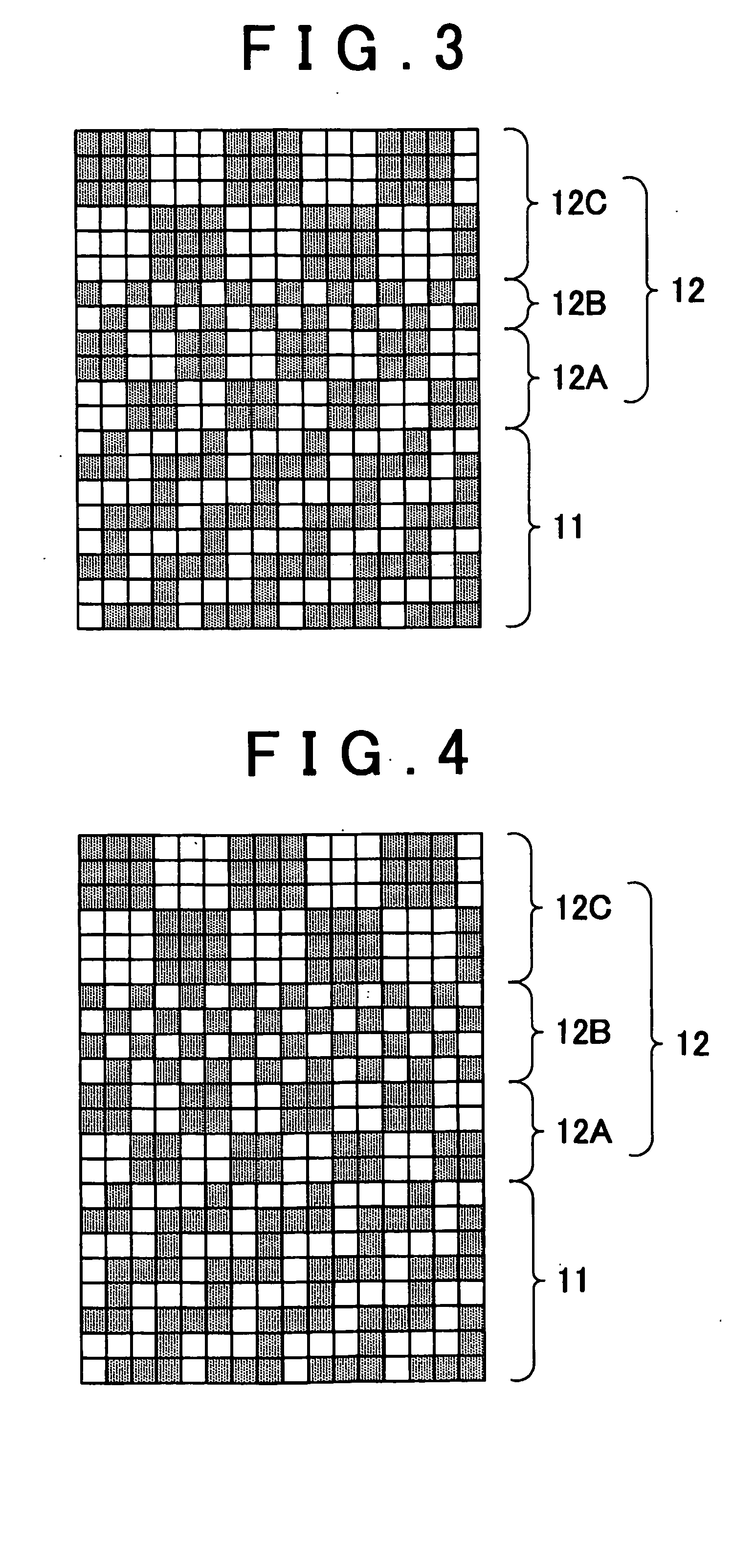Hollow-weave airbag
a technology of airbags and weaves, applied in weaving, pedestrian/occupant safety arrangements, vehicular safety arrangements, etc., can solve the problems of gas leakage, insufficiency of strength at the boundary portion, and stitching at the boundary of the bag portion, etc., and achieve the effect of sufficient air tightness
- Summary
- Abstract
- Description
- Claims
- Application Information
AI Technical Summary
Benefits of technology
Problems solved by technology
Method used
Image
Examples
examples
[0056] Hereafter, the embodiments of the invention will be explained in more detail by citing practical examples.
[0057] (1) Configuration of Hollow-Weave Airbag
[0058] The hollow-weave airbags according to the practical examples and comparison examples are woven using 350 dtex 108 nylon material yarn for the warp yarns and weft yarns, and carried out with the number of implanted yarns at 135 / inch longitudinally and 122 / inch laterally (1 / 2 of that figure in one bag portion), such that the boundary of the bag portion 11 and the closed portion 12 form a curved-line structure. Furthermore, coating is carried out in the hollow-weave airbags according to the practical examples and comparison examples, so that the coating amount of the upper cloth (front side) and the lower cloth (rear side) are both 60 g / m2. FIGS. 3 to 8 show minimum component units of weave structures of the hollow-weave airbag according to the practical examples and comparison examples. FIG. 3 shows the minimum compone...
PUM
| Property | Measurement | Unit |
|---|---|---|
| internal pressure | aaaaa | aaaaa |
| internal pressure | aaaaa | aaaaa |
| internal pressure | aaaaa | aaaaa |
Abstract
Description
Claims
Application Information
 Login to View More
Login to View More - R&D
- Intellectual Property
- Life Sciences
- Materials
- Tech Scout
- Unparalleled Data Quality
- Higher Quality Content
- 60% Fewer Hallucinations
Browse by: Latest US Patents, China's latest patents, Technical Efficacy Thesaurus, Application Domain, Technology Topic, Popular Technical Reports.
© 2025 PatSnap. All rights reserved.Legal|Privacy policy|Modern Slavery Act Transparency Statement|Sitemap|About US| Contact US: help@patsnap.com



